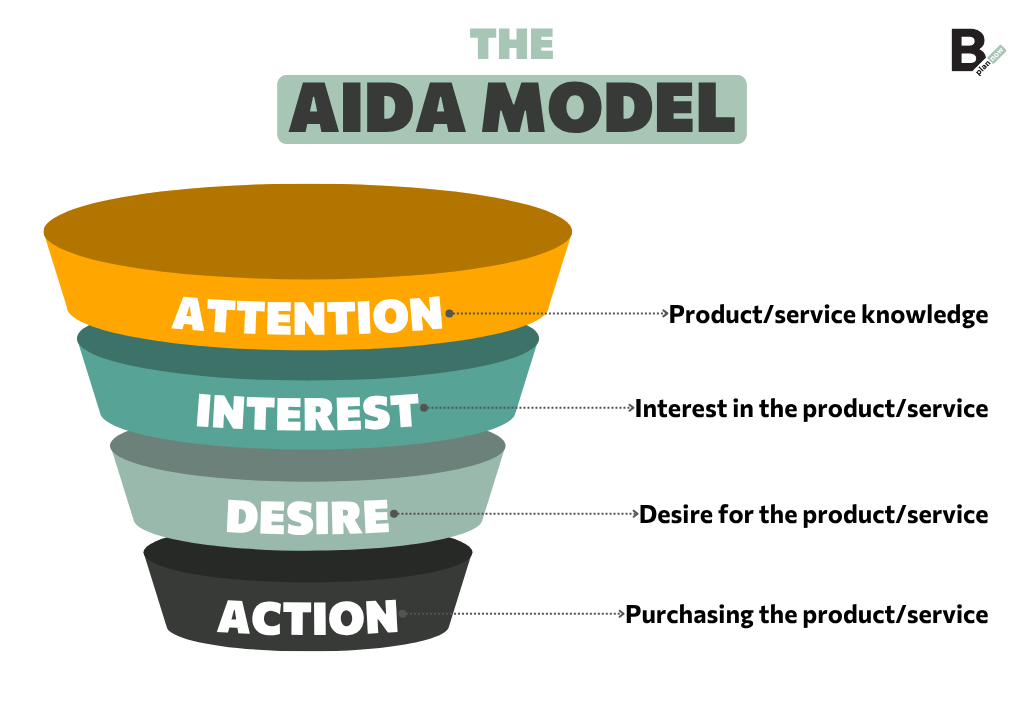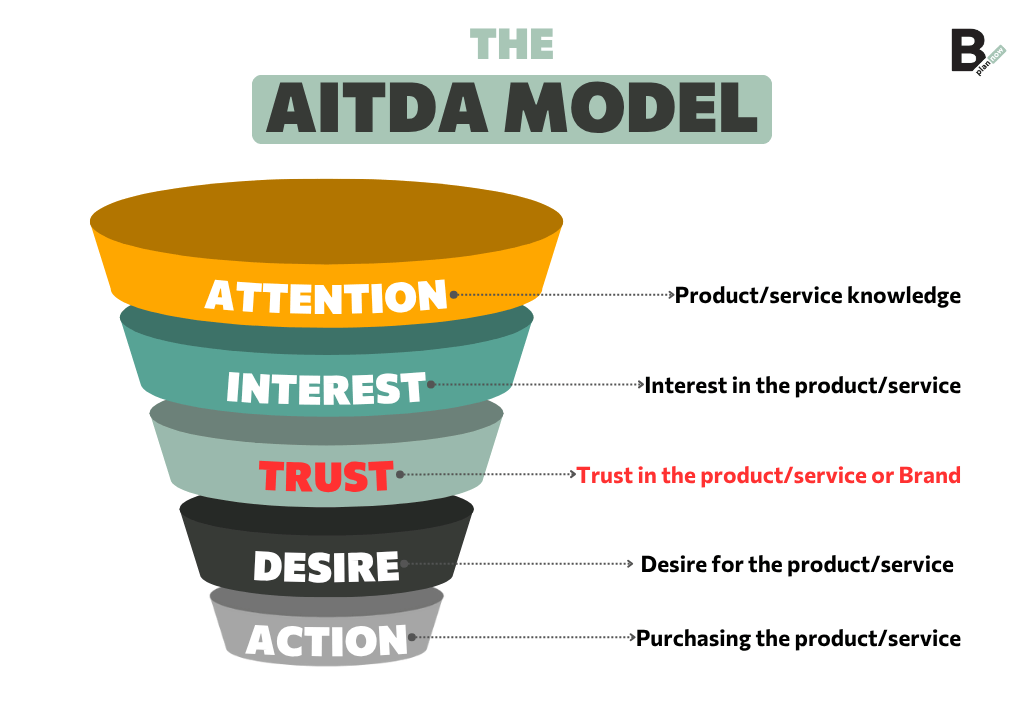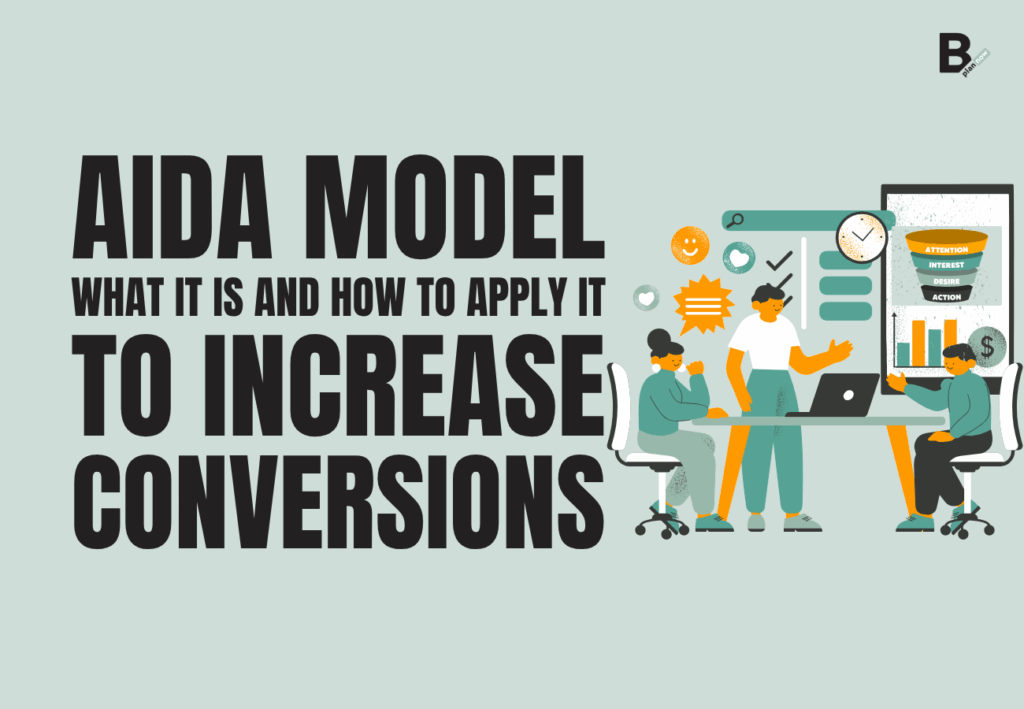If I tell you AIDA, do you know what we are talking about? No, the famous opera in four acts by Giuseppe Verdi has nothing to do with it. In this guide we talk about the AIDA model, that is, that particular marketing model, which, by harnessing the power of persuasive communication, can help you increase the conversions of your startup. If you do not want to miss this opportunity, sit back and read the next few lines carefully.
AIDA model: origins and applications in the modern context
The first step in finding out what the AIDA model is, of course, is to trace its origins and then proceed to the present day to learn about its possible applications in today’s context.
The first person to theorize the AIDA model, also known as the AIDA formula or the AIDA principle, was back in 1898 Elias St. Elmo Lewis, one of America’s earliest and most prominent advocates of the importance of advertising and a member of the Advertising Hall of Fame.
AIDA stands for “Attention, Interest, Desire, and Action,” and this formula originally stood for how advertising communications can succeed in engaging consumers and based on what criteria they distinguish different brands before coming to make the final purchase decision.
Although it was created in the late 1800s, the AIDA model (which has been subject to criticism, modification, and additions over time) is still successfully applied today in digital marketing, an area in which it is particularly difficult to get the attention of consumers, who are now constantly receiving messages from all directions.
So you, too, can successfully take advantage of the AIDA formula, which consists of four basic steps. You are about to learn about them in detail in the next few lines but, first, it is important that you take a few seconds to reflect on a phrase that has become famous uttered by Philip Kotler:
“Purchasing decisions are the result of a transformed state of mind.”
Done? You are ready, then, to discover the four basic steps of the AIDA model.

Attention
To be effective, an advertising communication must first capture the attention of its target audience by offering something original compared to competitors.
Fundamental, of course, is to know your target audience well: analysis of the keywords used by your target can be very helpful in this regard. Keep in mind, then, that the means through which to capture the audience’s attention are varied: you could use images or (better yet) high-impact videos or catchphrases.
Interest
Once you have captured the attention of your target audience, you need to keep it alive and turn it into a genuine interest in a specific offer. Storytelling can help you achieve your goal, which, in more concrete terms, is to be able to get your potential customer to perceive the urgency of the problem facing them and the need to find a permanent solution to it.
Desire
The third step in the AIDA model is that of desire. In this step you need to make the consumer understand that the proposed product or service is the ideal solution to their problem. To succeed in accomplishing this mission, you can use testimonials and reviews, so as to highlight well the benefits you are able to offer.
Action
The highlight is the moment of action, which can be either the actual purchase of the product or service offered or a more “simple” request for information or a click on a Call-to-Action. Whatever the action requested, the CTA must be direct and persuasive, and the process leading to the completion of the action must proceed smoothly or slow down.
The New AITDA Model: introduction of the Trust
As noted above, the AIDA model has undergone corrections and additions over the years. One in particular emphasizes the fundamental role that the customer plays today in the strategies of companies, which are increasingly oriented toward adopting models centered on customer centricity, but also (and above all) the importance of trust in the consumer decision-making process that leads to the final purchase of a product or service.

The crucial role of Trust in consumer decision making
The traditional AIDA model, according to critics, underestimates certain aspects and, in particular, the fact that the consumer must be satisfied with the product or service he or she buys, because only in this way can a fiduciary relationship be established between him or her and the company and lay the foundation for further purchases in the future.
AITDA model: strategies and practical examples
To effectively adopt the AIDA model and its integrated version AITDA, you need to know that, in practical application, the different phases tend to overlap and merge with each other.
There is another aspect, then, that you need to consider: these models describe theoretical purchasing paths that are successfully completed, but hiccups may occur in the process that force the consumer (and, consequently, the company) to take different directions.
Let us now see, in more concrete terms, what are the best strategies to instill confidence in consumers.
Strategies to instill Confidence: testimonials, reviews and transparency
As noted earlier, testimonials and reviews can be of great help in enticing consumers to proceed with a purchase. Social proof, after all, is an absolutely central concept in today’s marketing: you will not be surprised to learn that people tend to accept and consider behaviors shared by a large number of people as more worthy of approval.
Aiming for complete transparency is another great way to instill trust and improve the customer loyalty process. Being transparent means communicating your brand and brand identity authentically, clearly, and humbly so that consumers can understand your soul in just a few clicks and begin to trust you.
Examples of effective communication
Among the examples of effective communication regarding the above, a special mention goes to Iliad, which uses several channels, including social networks, to communicate its offerings to the public.
The copy used is minimal, clear and simple, all focused on the features that make the offer special.
Iliad’s chosen way of attracting attention is precisely the massive advertising campaign, on social media and beyond.
Interest is generated by the advantageous terms of the offer, while desire and trust are instilled with the phrase “Forever, for real,” which summarizes the company’s mission in a market, that of telephone operators, of which consumers generally tend to be wary.
Having reached this point, then, all that consumers have to do is click on the image shown by Iliad to land on the site (where the offer is again proposed along with the registration procedures) and complete the purchase.
AIDA model vs. AITDA model in startups
This guide dedicated to the AIDA model can only conclude with a deeper look at the world of startups, which, as is often the case, also face some particular challenges.
Challenges for Startups
To acquire new customers, a startup must identify and reach the right target audience. In practical terms, the “secret” is to find out how customers find you and why they buy from you, so that you can optimize this process and extend it to other consumers.
Even today, many startuppers (and many entrepreneurs in general) consider new customer acquisition a matter of luck. In reality, it is a highly plannable and predictable process, based on market research, buyer personas and possible touch points with customers.
This is where the AIDA model comes in, which describes precisely how, by going through the four stages Attention, Interest, Desire and Action, an unaware consumer becomes a potential customer.
Include Consumer Confidence as one of the key variables
Nowadays, however, as mentioned, it is necessary to include another parameter within the AIDA model, which is that of trust in the product or service or, more generally, in the brand.
Indeed, it is at this stage that the real turning point lies, enabling the consumer to take the decisive step toward purchase and thus ensure not only conversion, but also a lasting relationship over time.
Do you want to read all the articles related to the stage your startup is in?


